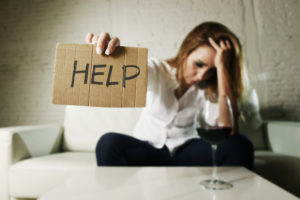Recently, the number of suicide attempts and deaths have been on the rise in California. The problem, however, did not start now. The total number of suicides in California rose by 50% from 2001 to 2016. Since a considerable drop at the beginning of the 2000s, reports of deaths have been going up ever since. Currently, people die more often from suicide than from homicide in California.
The California Department of Public Health (CDPA) did a county analysis. From 2015-2017, Lake County had the highest rate of suicides reported. However, the analysis considered the North Coast and Northern San Joaquin Valley as one. Another study, done on 1999-2016, shows that Trinity County had the highest rate in that time frame.
In fact, most rural areas have registered the highest suicide-related rates – albeit not numbers of deaths. While numbers in populated cities like Los Angeles (2566) or San Diego (1260) might be the highest in total, that might be misleading. Rates show the ratio of the total amount of people and suicidal deaths.
More About the Prevalence of Suicide
Suicide does not pick and choose, and suicidal thoughts can afflict anyone. But according to research, males are more than thrice as likely to die from suicide in California. Depending on the age group, even more – the older the age group, the bigger the disparity between males and females.
Still, when it comes to suicidal attempts cases, they involve women way more often than men. Race-wise, white people and Native Americans are the two ethnicities most commonly reported in suicide-related deaths.
When it comes to age, it gets more complicated. The most recent data on this in from the year 2017, and it paints a scary picture. People aged 25-29 are as likely to die by suicide than those aged between 60-64. However, while there are spikes around the mid-20s in suicide rates, after the 40s, the rate increases continuously. County-focused studies show the same thing. A study in Orange County, for instance, concluded that chances of suicide are higher between people over the age of 45.
Risk Factors For Suicide – What To Look Out For
The American Foundation For Suicide Prevention (AFSP) makes it easier to understand: there is no single cause for suicide. According to the AFSP, suicide can happen when stressors end up exceeding coping abilities and mechanisms. This is especially true for those suffering from mental disorders.
Even though it isn’t always predictable, there are risk factors to suicide. Many aspects of one’s daily life, experiences, and genetics can put them at a risk group for suicide. These factors don’t make it inevitable, but they are red flags to look out for. They are also all the more reason to get help and take preventive measures.
Mental illnesses are one of the leading causes of suicide. Being diagnosed with a mental disorder can put someone at risk. Depression is currently a psychiatric disorder more often associated with suicide. Many others, such as anxiety, PTSD, bipolar disorders, or borderline can also do the same.
Substance use disorders, or addictions, are a big problem as well. When exposed to drugs or alcohol for long periods of time, the brain suffers changes. The cerebral areas related to decision-making, judgment, and behavior all become damaged. Additionally, the chemical and neurological imbalances affect response to external stimuli, like experiences that might make someone sad, stressed, frustrated, etc.
Another thing to consider is family history. Things such as mental and/or substance use disorders are present in genetics. A history of either disorder can raise the chances of someone developing it. If someone in the family died by suicide, looking into their health and lifestyle is also a good preventative measure.
Dual-diagnosis: Even Bigger Cause For Concern
A dual diagnosis is characterized by two co-occurring disorders. Usually, the two disorders tend to be a psychiatric one and a substance use disorder. When this happens, both diseases can feed off of each other.
These cases are not at all rare. In the U.S., about 45% of people suffer from dual diagnosis. And among those with substance use disorders, 60% of them also struggle with mental health issues. The main problem with dual diagnosis is that not treating one of the disorders might worsen the other. Since both diseases can trigger symptoms that lead to suicidal thoughts, people suffering from dual diagnosis have double the risk.
Another issue is the fact that one disorder can trigger the other. Exposure to substances at an early age can fasten the development of a “dormant” mental disorder. However, people with mental disorders are prone to “self-medicating”, which can lead to addiction. Either way you look at it, treating for a single disorder is not just a way to prevent suicide, it is a way to prevent a potential second disorder.
General Signs
These risk factors don’t necessarily mean someone might attempt suicide. Nonetheless, it is possible to look for signs that a loved one might be at risk – or even yourself. Suicide isn’t a sudden decision someone takes out of the blue, many things lead to it. Seeing said signs might lead one to look for help or to reach out to the loved one they are worried about.
What is most important to understand is that not everyone shows signs of suicidal thoughts. Many people do a good job of hiding their pain and emotions. Some people might even feel ashamed to talk about it.
One or two items should not be a cause for concern. But checking multiple of these boxes might be a sign that something is wrong:
- Withdrawal from socializing or activities that they once enjoyed
- Changes in sleep cycles or eating habits (too much or too little of either)
- Frequent use of alcohol or drugs, more often and in higher doses than usual
- Moodiness or extreme changes in humor
- Depressive thoughts or subjects, even to the point of explicitly saying they want to die
- Feelings of uselessness, lack of purpose and motivation, or even guilt
- Engaging in risky behavior constantly or taking unnecessary risks
- Agitation, anxiety, or restlessness
- Expressing constant physical or emotional pain
- Saying goodbye to people and/or getting rid of possessions, even taking care of their will
How To Get Help + Preventative Measures
Suicidal thoughts are often triggered by an underlying cause. So the first step is to find it and address it. The only person who can be fit to help someone is a licensed professional. There is no replacement for proper treatment for suicide prevention. Venting to loved ones, using apps that help with symptoms like anxiety, and any other form of “fast” help is not treatment. They can only do so much, and not so much in the long term.
Therapy is one of the most useful tools for those dealing with suicidal thoughts. Looking for a therapist to speak to will help you process your feelings and find out the factors affecting you. In some cases, a psychiatrist might be the best option. Psychiatrists can provide both therapy and medication for severe cases. They’ll say what would be the best course of action and what prescription drugs might help.
Self-medication, whether by controlled substances or not, can make things worse. Someone should not try to take medication on their own, even if they are prescription drugs they somehow had access to. Likewise, a process of detox might be beneficial, especially in the case of addiction. Medically-assisted detox might be best depending on the substance on the dosage often taken.
Treating addiction is also a preventative measure for suicide. Alcohol, for instance, is a depressive substance. As such, it can alter the train of thought and general overview of life. This can lead to taking a bad decision, including suicide. Substance abuse can worsen symptoms and disorders that might lead to suicidal thoughts or actions.
How To Approach Someone You Think Is Having Suicidal Thoughts
There are five things you can do to help someone with suicidal thoughts, according to the National Institute of Mental Health. The first thing to do is to ask them directly if they are having suicidal thoughts. It might be a delicate thing to ask, but just remember that they might need help in order to get help! Studies have also proven that asking does not increase the chances of someone attempting suicide, either. It is the first step to a conversation.
If you decide to reach out to them, then you need to be there for them. Listen to them as they talk to you. Once you’ve opened the door to communication, leave it open. It is not rare for people that attempt suicide to never even voice there’s a problem. So once they do, it is important that they feel validated and heard.
Next, they might need guidance when reaching out to professionals. Aid them in their search for a treatment center or a therapist as they start looking. Those suffering from depression or a lack of motivation might have difficulty following through with the process. But as mentioned, there is only so much a loved one can do. So the vital thing to do it to get professional help in order to know how to proceed.
Meanwhile, it might be a good thing to help them stay away from triggers or items used for self-inflicting pain. If you can, try reducing their access to medication or lethal objects. This is especially important in case of prior suicide attempts.
Continuing to Help Your Loved One
Once they start treatment, having someone checking on them or following up can make a big difference. But keep in touch with them as possible to see how they are doing and if they are improving. Loneliness can be a powerful issue, but having a person to count on can be a great solution.
Treatment can be residential or outpatient, depending on their scenario. Inpatient treatment would likely require your loved one to live at his or her treatment facility. This allows the individual to have access to resources and professionals who can help them at any time. In an outpatient treatment approach, individuals may live at home while attending treatment and therapy sessions for several hours per week.
With all of this in mind, remember: not everyone reaches out for help. If you see something, if you notice something is wrong, they might need to feel they can open up. While you, as someone in their personal life, can only do so much, asking is a great way to start helping.
Get The Help You Need
Suicidal thoughts can haunt anyone and can become scarier as time goes on. Unfortunately, talking about it can make some people uncomfortable, and many don’t know how to deal with it. It is still too taboo for our own sake – but it doesn’t have to be that way. If you don’t know where to go or who to talk to to get help, or if you feel like you’re lost, you can talk to us.
We at the Northbound Treatment Center know that you might have tread a dark road to lead you to suicidal thoughts. More often than not, that can even lead to substance abuse. We hope to get a chance to help you with any and every problem that took you to where you are. Our programs have been designed to help those with drug and/or alcohol addiction as well as mental health issues that might lead to it.
It takes courage to ask for help, but it is the most important decision in heading the right direction. So if you or a loved one are struggling right now, visit our website and contact us today by calling (866) 511-2458. Our team can provide any additional information and answer any questions you might have. Take that first step, and find the right solution to your current problem. Suicide is not a solution – and it will only stop you from experiencing the best things you can get in life.
References:
https://www.nimh.nih.gov/health/topics/suicide-prevention/index.shtml
https://www.cdph.ca.gov/Programs/CCDPHP/DCDIC/SACB/CDPH%20Document%20Library/Violence%20Prevention%20Initiative/Data%20Brief%201_Overview%20of%20Homicide%20and%20Suicide%20Deaths%20in%20California_Updated%203%2018%2019.pdf
Author
-

President, CEO & Founder at Northbound Treatment Network
Paul Alexander is the CEO, President & Founder of Northbound Treatment Network in Newport Beach, California. He believes wholeheartedly in transformational leadership, organizational health and effective, fully integrated substance use disorder and mental health treatment. With over 27 years of experience in behavioral healthcare, Paul has extensive knowledge of “in vivo” treatment modalities, clinical development, operations, strategy, marketing and financial planning. He has been widely recognized for his development of collegiate-based residential treatment programs for students in recovery and authored a research study at The University of California confirming this modality’s effectiveness.
Paul’s comprehensive professional experience, willingness to innovate, and emphasis on organizational health are vital factors in Northbound’s continued success. Paul received his Certified Addiction Treatment Specialist training at Saddleback College in Mission Viejo, CA, and was awarded Outstanding Alumni Service Award in 2002. Paul holds a Bachelor of Arts degree in Criminology, Law and Society, Summa Cum Laude, from University of California, Irvine, and a Juris Doctorate degree from Loyola Law School of Los Angeles. Paul currently serves on The National Association of Addiction Treatment Providers (NAATP) board. In addition, he serves on The Family Recovery Foundation board and The CarePossible board in Orange County; both organizations are committed to raising funds for family recovery and treatment for former military personnel. Paul is in recovery himself and lives in Orange County with his wife Silvana and his two young sons, Noah and Dean.










